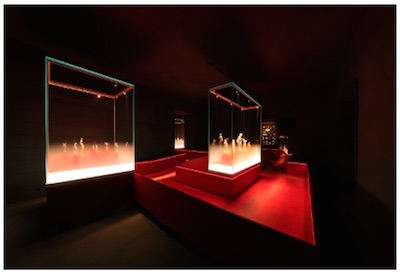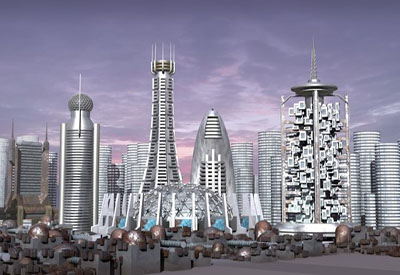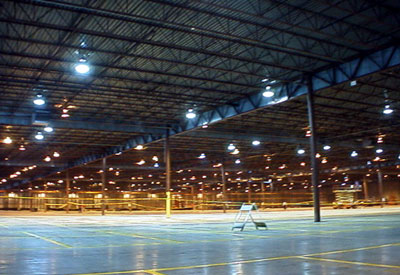The Intelligent Building — A Reality or Just an IoT Dream?

November 28, 2018
The last couple of years have seen a plethora of lighting innovations in a quest to “control” the ceiling and eventually a building, a network of buildings and then cities. This is the vision of smart cities… interconnected devices that enable “control” of various electrical and mechanical systems.
It starts with lighting controls and can then migrate to building controls. This is the essence of an “intelligent” building.
While some feel this should occur through existing copper wires (especially given the renovation market), others are exploring and developing wireless solutions and another venue is PoE (Power over Ethernet). Given the continued growth in this sector and the fact that many distributors are not aware of it as much is sold direct and/or installed via datacom distributors, we reached out to our friendly PoE expert, Wendell Strong from Genisys Lighting, a division of Innovative Lighting, for his thoughts on the pursuit of intelligent buildings.
From the beginning of our exploration of space, newly created technologies have been applied everywhere resulting in our very selves becoming “networked” and “connected,” changing the way we live our lives and interact with others through personal smart devices. It seems that almost every single thing is getting smarter and this is just one of the big changes that is enabling the smart or intelligent building to become a vision in the world of the Internet of Things (IoT).
It is important to recognize that buildings were not dumb before the arrival of the IoT. Even disparate legacy systems were being tied together by system integrators making systems more controllable and manageable for decades. Buildings were already evolving on their own with reasonably sophisticated systems mostly concerned with increased energy efficiency.
With the advent of the IoT, bigger things are being connected at much more rapid rates and now the vision includes entire cities, campuses, buildings, and even our vehicles are being automated. The wave has started, and it is now washing up on the shores of the commercial building.
We are at a point where all the separate building systems have become smarter and can make their own individual case for being a part of the new commercial buildings based on their latest and greatest applied technology. However, smart components by themselves do not make a building intelligent. But it is a great start.
The intelligent building will need data if it is to become truly intelligent. Your brain would likely still function with no input from your five senses, however you would be unable grow in intellect without input data. What the intelligent building lacks today in intelligence is primarily a lack of data inputs from all major internal systems and the ability to pull it all together to be analyzed and optimized.
This need for data is already changing the expectations of the major systems within a new building today. The lighting system, as the largest single building system, is already meeting the challenge and leading the way with Power over Ethernet (PoE) technology. This allows both power and control of lighting via a low voltage category cable and RJ45 connectivity with endpoints that are individually addressable with 1% granularity of control.
These lighting systems are networked, and software controlled, making them a perfect gateway for the intelligent building. Some, like Innovative Lighting’s GENISYS PoE Lighting, feature every known lighting control functionality right out of the box. All the tools are in the toolbox ready to go even if they are not used initially. This unique all-in-one lighting system control approach not only ensures maximum lighting efficiency, but now enables much more.
Many recognize that the two largest building operational systems, lighting and HVAC, typically account for about 70% of the electrical usage. There has been a major emphasis on reducing energy consumption of these two systems sometimes to a point of inadvertently harming the effort as a whole. The most intelligent and the most expensive system in the building is typically the one that takes the brunt of these actions: The Human System, your workforce.
In most cases, the Human System is why we built the building to begin with. This is the system charged with accomplishing the goals of the business enterprise and literally, is the heartbeat of the organization. The intelligent building cannot simply be a high-tech approach to controlling costs; it must also unleash the productivity of the employees to be truly intelligent.
Now that we have a perspective that all the systems in the building must be optimized for performance, let’s take a closer look at the lighting system as the gateway to a more intelligent building.
Single multi-function sensors use motion sensing for occupancy control (auto on/dim/off) and vacancy control (manual on/dim/off). Ambient light sensing enables daylight harvesting, maximizing day in and day out energy savings while continuously collecting valuable data along the way.
In addition to the motion event data, these same sensors and wall switches are also collecting ambient temperature data. When this highly desirable density of data is integrated to an equally capable HVAC system, efficiencies can begin to soar.
For example, on Friday afternoon the HVAC system has data gathered from the lighting system showing no motion has been detected in an area for a period of time. The HVAC system is now able to direct conditioned air elsewhere if needed. Two highly capable building systems working together based on data acquired from the lighting system. This is just one example of what can be done today with the right equipment, data points, and integration skills in an average new build today.
The Human System is providing data points through multi-function sensors and wall switches for space utilization analysis and energy savings. But what is it getting in return to perform its primary functions better? Is it possible to enable a symbiotic relationship between the building and the workforce?
Empowering employees to be their best is obviously smart management to begin with.
This same intelligent lighting system combines full dimming and colour tuning control of lighting allowing personal lighting preferences in boardrooms, private offices as well as meeting and collaboration areas. Personalized lighting based on the employee’s task and mood to create their ideal work environment is very likely to produce more productive and satisfied employees. Daylight Rhythm brings “the outdoors, indoors” by replicating sunrise to sunset natural lighting changes every 60 seconds. This helps employees keep their workday in sync with benefits after work ends.
As for that symbiotic relationship with the enterprise, every personal interaction with the lighting system likely creates 3 positive outcomes. Since they cannot use more power than what is made available to them, their preference will save energy, organically extend the life of the LEDs themselves, and likely increase personal effectiveness and productivity.
According to Jones Lang LaSalle (JLL) and their 3-30-300 principle, $3.00 per square foot of the building represents the cost of utilities, $30.00 per square foot represents rent, and a whopping $300.00 per square foot supporting the cost of your workforce. This perspective of the 3-30-300 principle implies if you are going to make a change, make sure it has a positive effective in all three major cost centres of the building.
So where does this leave us with the intelligent building today? Well, if a simple definition of intellect is “the ability to learn, understand and apply” then perhaps we have a ways to go yet. However, now we can make more intelligent decisions while the intelligent building continues to evolve.
Wendell Strong is Genisys Lighting‘s PoE Lighting Manager. Genisys Lighting is a division of Innovative Lighting. He can be reached at 515-777-7449.
Some thoughts/observations:
- As those in lighting and sales know, there is lots going on in lighting controls. Seems like every lighting manufacturer has some ability to offer controls and some of the larger lighting companies are expecting all products to come “lighting control ready” in the very near future given the reduction in costs. The challenge for distributors: which controls offering to recommend and when? As well as training sales staff and educating contractors. Will these systems have interoperability across platforms? Do customers want to control everything via their phone?
- Will a data management service be developed? Interfaces that enable data monitoring and analysis by distributors? By manufacturers?
- Who will take the lead on selling the intelligent building? Will electrical salespeople talk about managing HVAC and security systems, or will the building automation distributor take the lead? Or perhaps engineers will spec whole systems? Or key manufacturers?
- And does it differ for new construction vs. renovation (and size/scope of the renovation.
- Electronic distributors are already selling some PoE projects with lighting manufacturers pursuing this distribution channel as datacom contractors/installers are the installation of choice. A lost opportunity for electrical distributors (lighting sales leakage?). Perhaps electrical distributors should ask their lighting control suppliers what channels they are selling through?
And if you’re interested in the lighting benefits of PoE, check out this article titled “How PoE Lighting is Revolutionizing Smart Homes and Offices”: https://planetechusa.com/blog/poe-lighting-how-poe-is-revolutionizing-led-lights-in-smart-homes-and-offices/. It’s dated about a year ago and highlights cost comparisons, deployment benefits and the “new installers.”
PoE seems to be slowly coming out of the shadows. Perhaps the major marketing blitz by CISCO a couple of years ago was a little early, but the market is moving. It’s a long cycle sale but if distributors, and agents/reps, are not aware, the intelligence opportunity will migrate to other channels.
Are you playing in the PoE market? What, if any, experience do you have in quoting and selling PoE? Are your salespeople / lighting specialists conversant in the topic? Should this be an electrical distribution opportunity?
David Gordon is President of Channel Marketing Group. Channel Marketing Group develops market share and growth strategies for manufacturers and distributors and develops market research. CMG’s specialty is the electrical industry. He also authors an electrical industry blog, www.electricaltrends.com. He can be reached at 919-488-8635 or dgordon@channelmkt.com.










